The U.S. Trustee plays a major role in monitoring Chapter 11 cases by overseeing the debtor's operations and financial reporting. The U.S. Trustee conducts creditor meetings, ensures compliance with reporting requirements, and can seek to convert a case or have a trustee appointed for noncompliance. A trustee can be appointed if the debtor is dishonest or mismanaging the business, or a party requests it. The trustee then takes over management of the business from the debtor in possession and must file a reorganization plan.

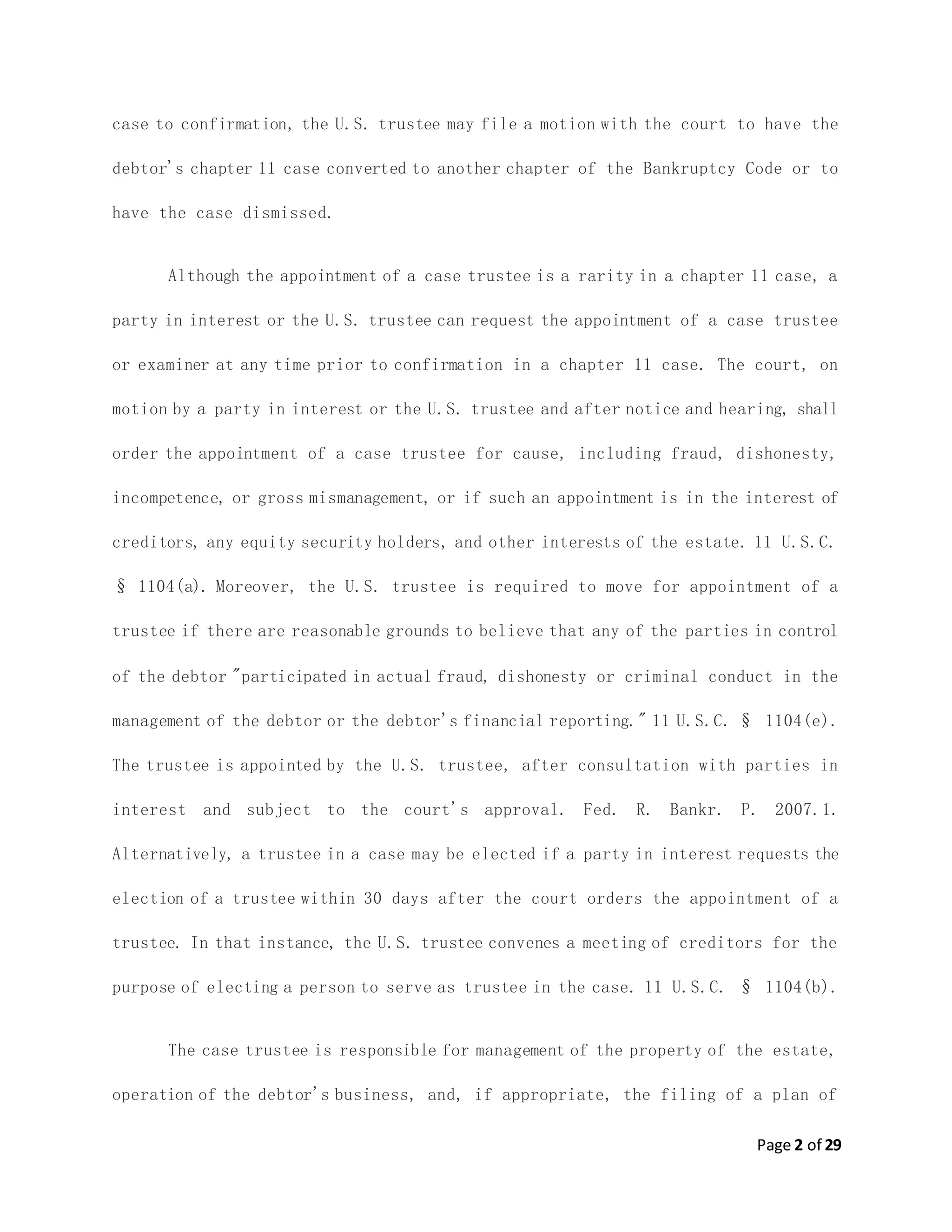
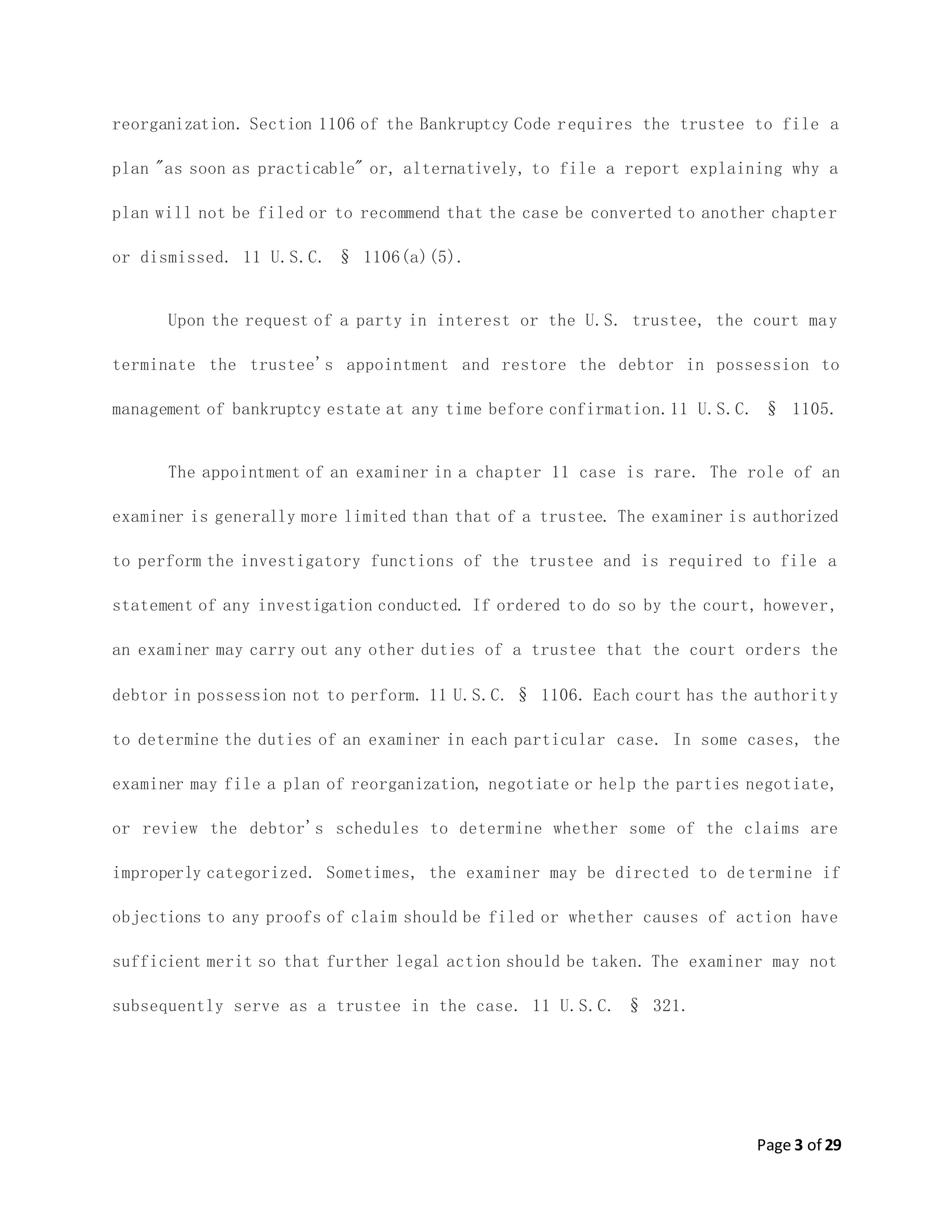

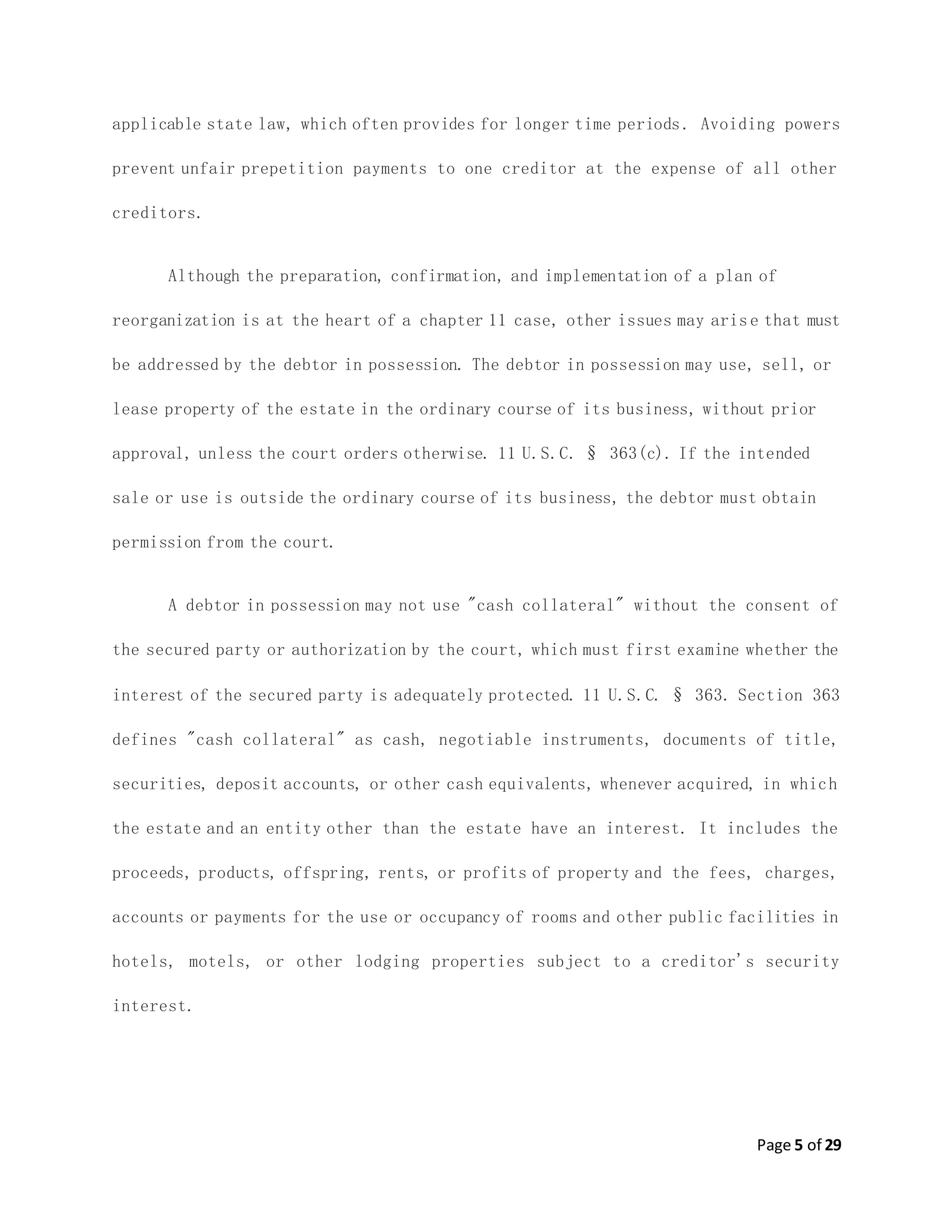


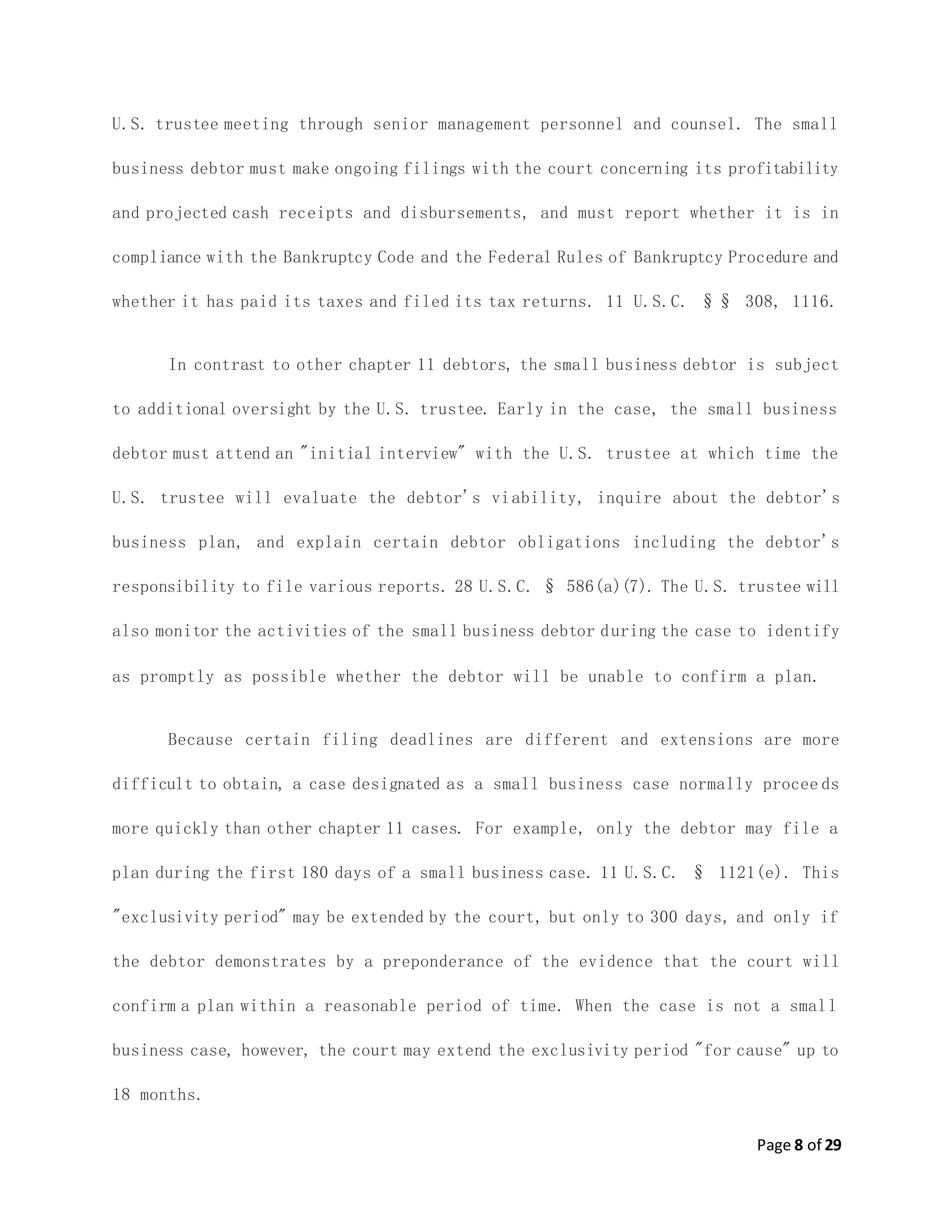
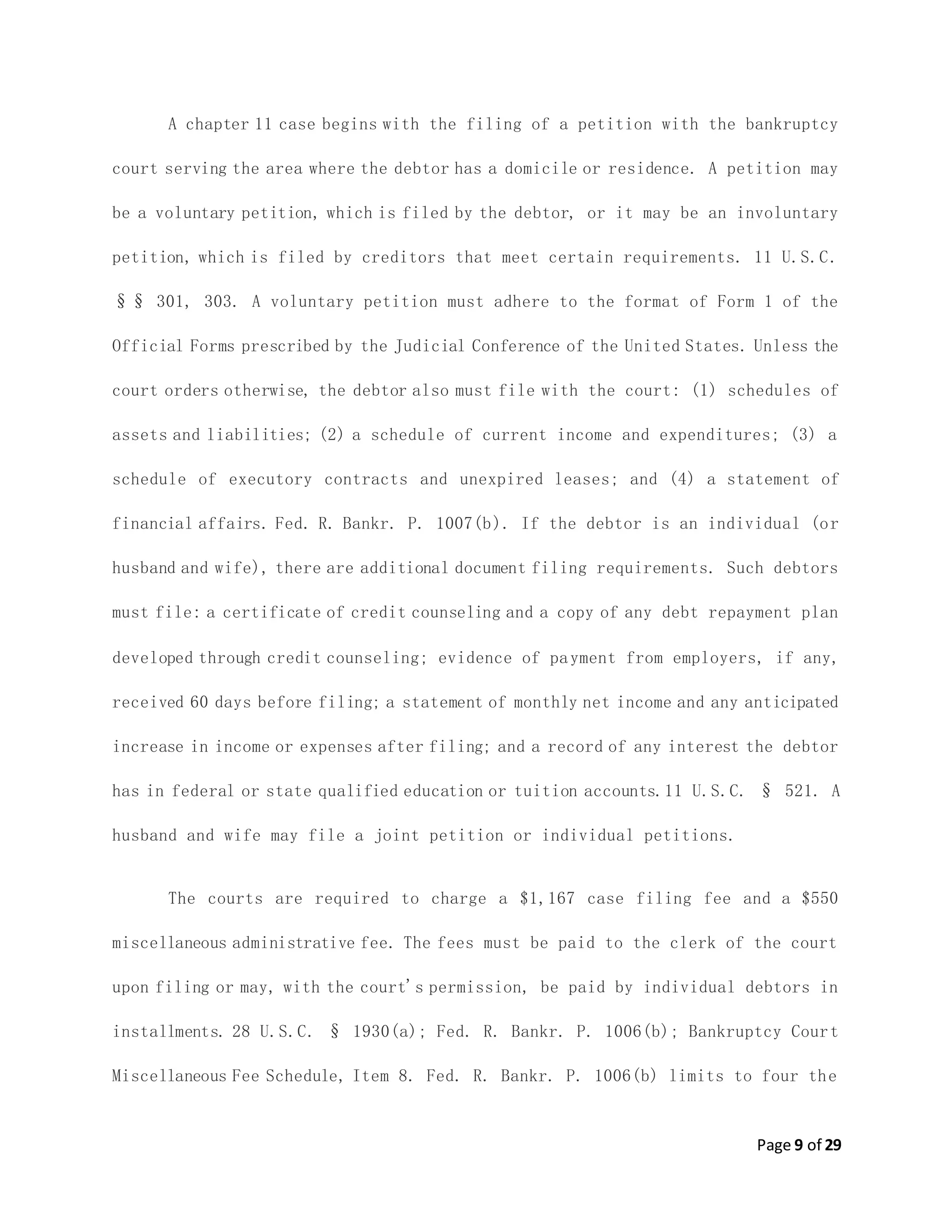
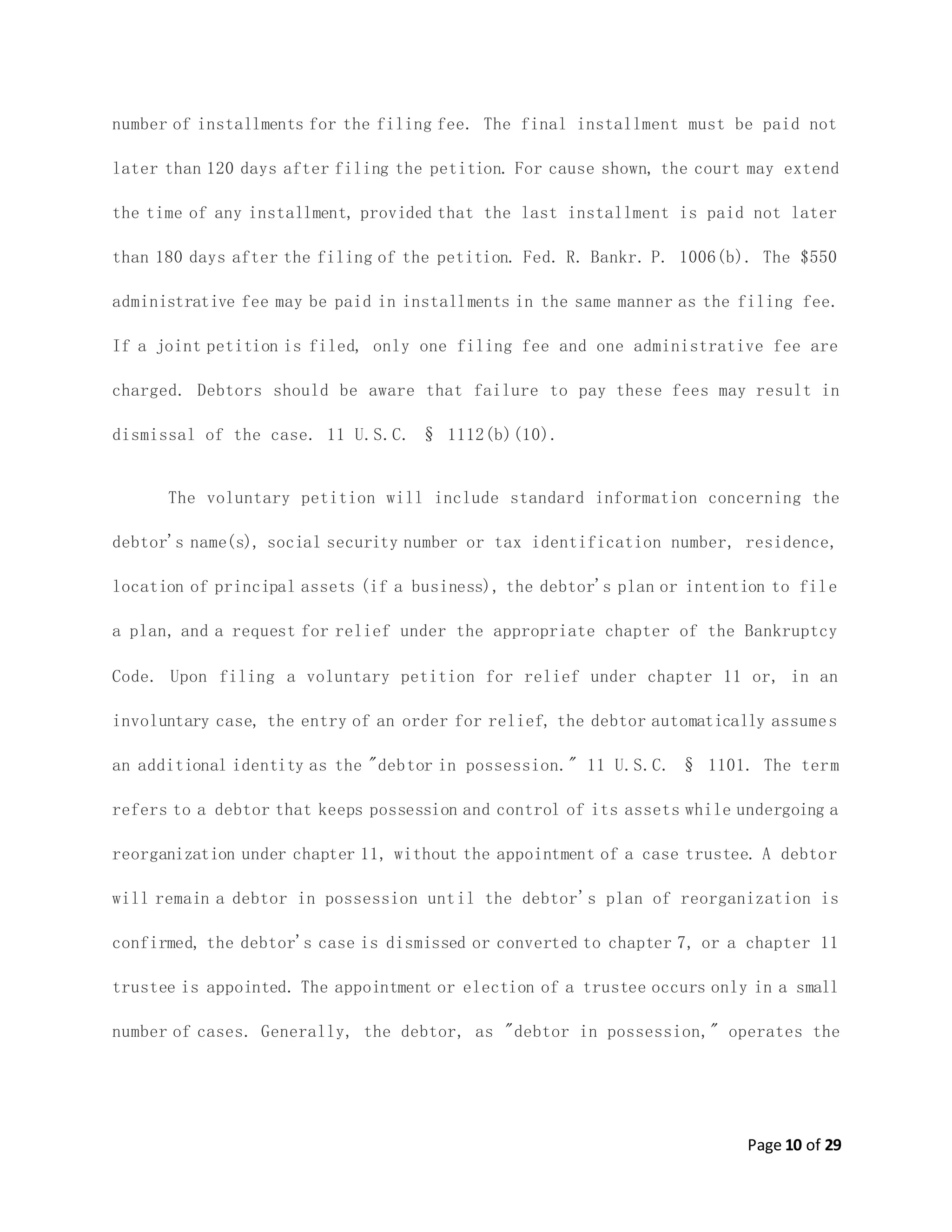
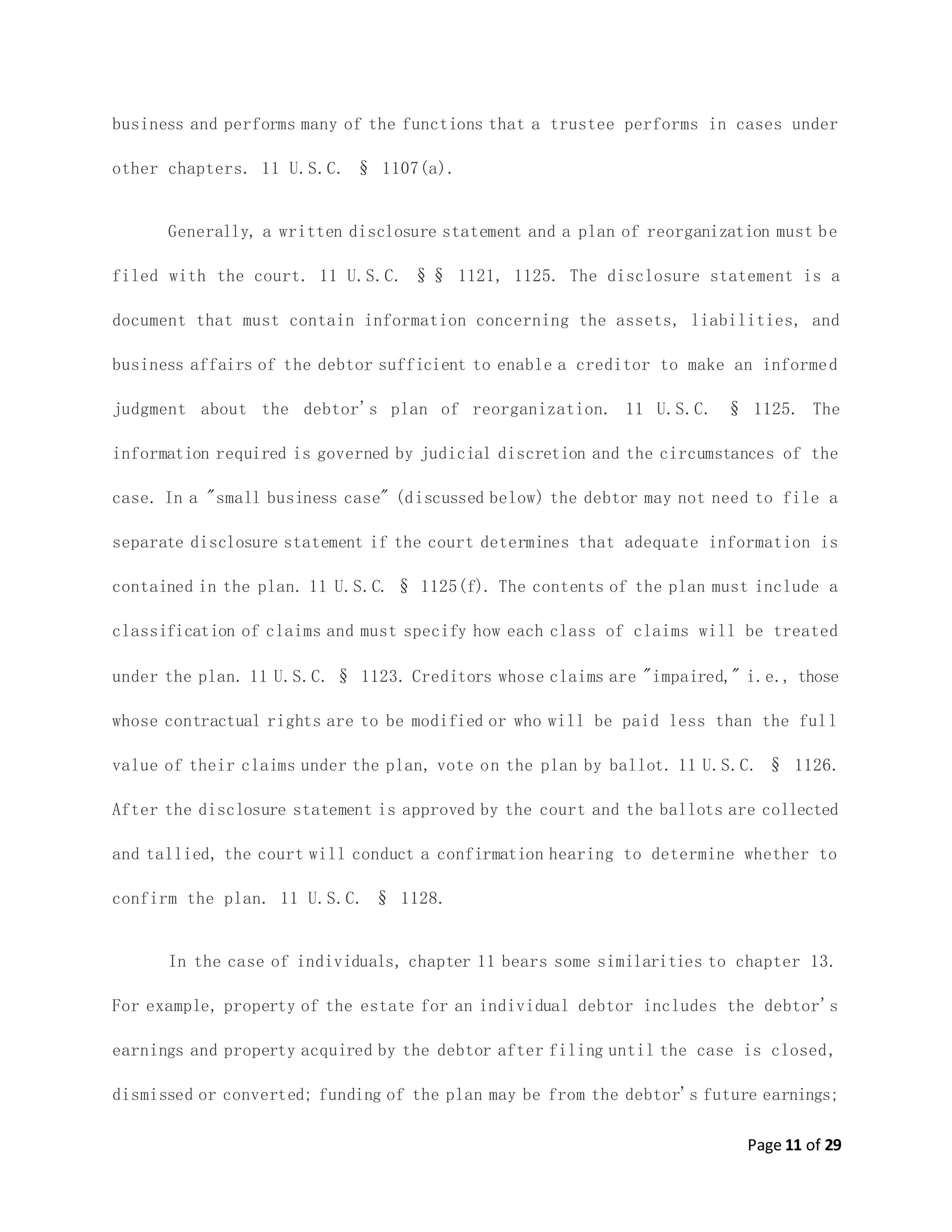

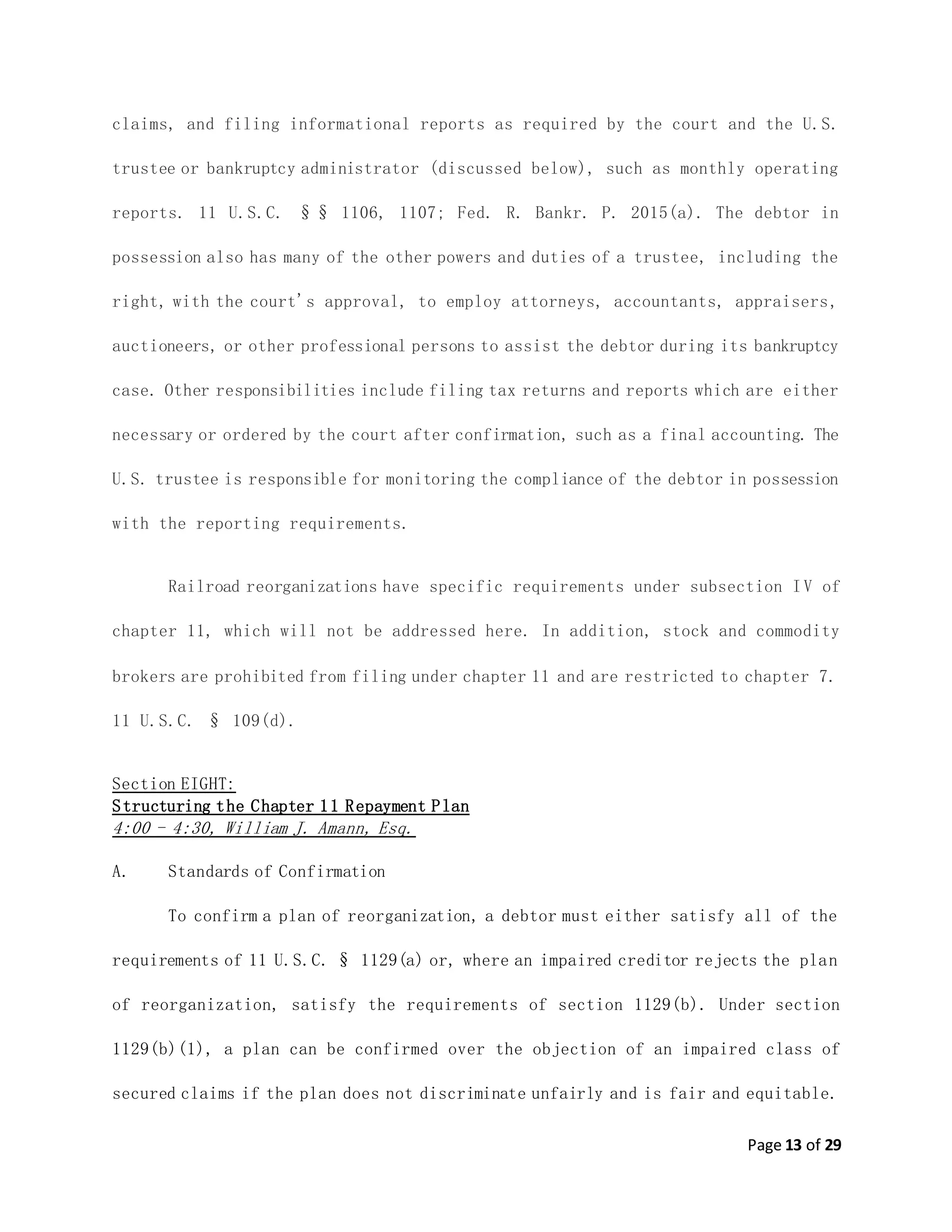

![Page 15 of 29
v. Official Committee of Unsecured Creditors (In re American HomePatient, Inc.), 420
F.3d 559 (6th Cir. 2005), namely first to identify whether there is an efficient
market from which to take the appropriate interest rate, and if not, then progress to
the Till formula approach. The burden of proof on any upward adjustment to the prime
rate is on the creditor. Till, 541 U.S. at 479-80.
When deciding to propose a Plan, review §1121 for time periods. Then look at
§1122 dealing with classification of claims to see if any claims are substantially
similar. Go on to study § 1123, which deals with what can go into a Plan. Use this
section as a checklist. §1124 defines impairment of claims and how you structure the
Plan is important since impaired classes are entitled to vote on the Plan. Next
check out §1125 dealing with disclosure statements, discussed later in this article.
Section 1129(a)(11) provides that courts shall confirm a plan only if
“[c]onfirmation of the plan is not likely to be followed by the liquidation, or the
need for further financial reorganization, of the debtor or any successor to the
debtor under the plan, unless such liquidation or reorganization is proposed in the
plan.” 11 U.S.C. § 1129(a)(11). This confirmation requirement is referred to as the
feasibility requirement. See Fin. Sec. Assurance Inc. v. T-H New Orleans Ltd. P’ship
(In re T-H New Orleans Ltd. P’ship), 116 F.3d 790, 801 (5th Cir. 1997). A plan of
reorganization is feasible if it offers “a reasonable assurance of success.” Kane
v. Johns-Manville Corp. (In re Johns-Manville Corp.), 843 F.2d 636, 649 (2nd Cir.
1988). “Success need not be guaranteed.” In re Johns-Manville Corp., 843 F.2d at
649. “The standard of proof required by the debtor to prove a Chapter 11 plan's](https://image.slidesharecdn.com/b5603def-a207-48a2-bdfe-7d5970ea5c4b-160315182612/75/NBI-2015-Chapter-11-15-2048.jpg)
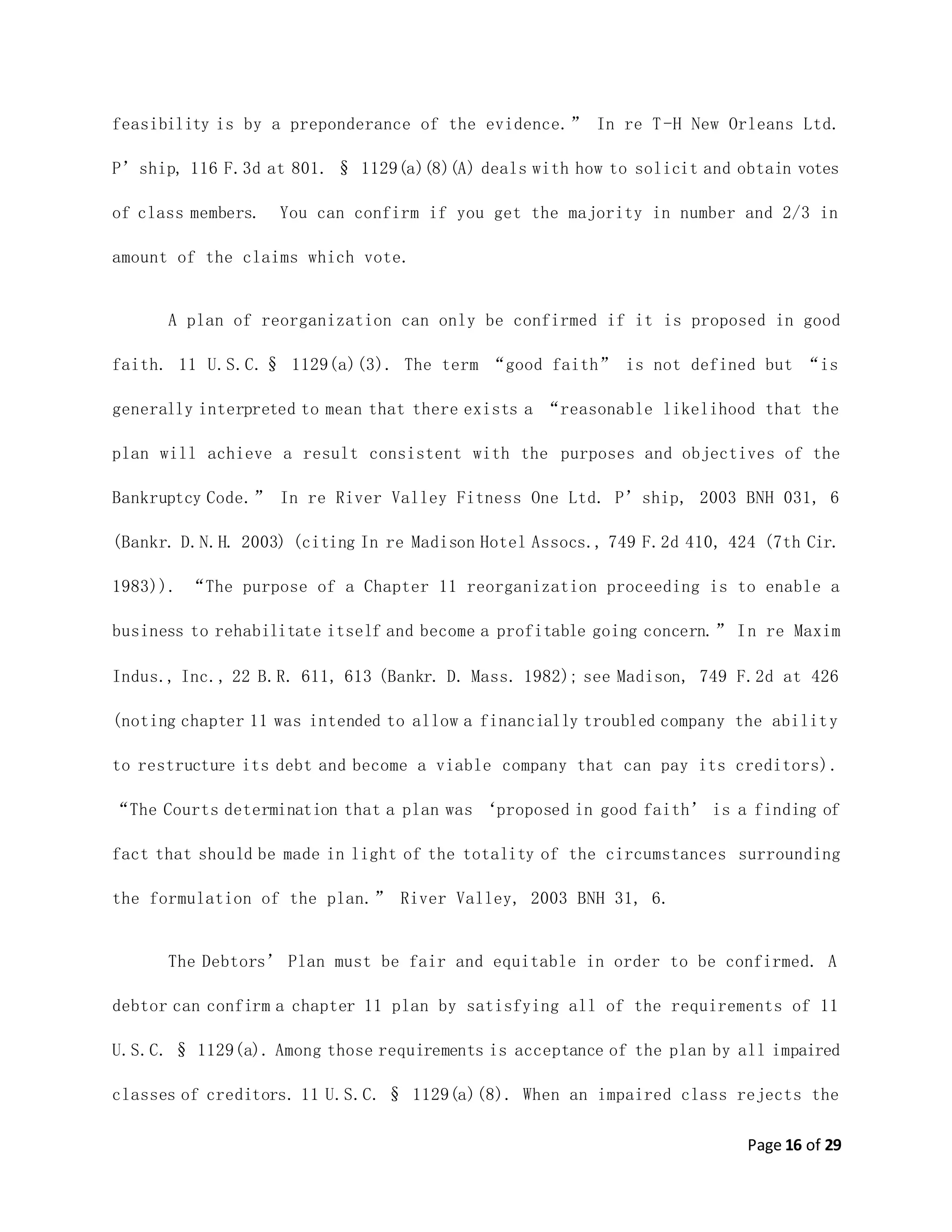
![Page 17 of 29
plan, the debtor may still “cramdown” the plan over that class’s dissenting vote
under 11 U.S.C. § 1129(b) . There are two conditions to confirm a plan pursuant to
§ 1129(b). First, the debtor must satisfy all of the requirements of §1129(a),
except for § 1129(a)(8). Second, the plan must not discriminate unfairly and must
be“fair and equitable” to the class that rejected the plan. 11 U.S.C. § 1129(b);
see Bank of America v. 203 N. LaSalle St. P’ship., 526 U.S. 434, 441 (1999). For a
plan to be fair and equitable to a dissenting class of impaired unsecured creditors,
the class must either be paid in full or “the holder of any claim or interest that
is junior to the claims of such class [cannot] receive or retain under the plan on
account of such junior claim or interest any property.” 11 U.S.C. § 1129(b)(2)(B).
This section is often referred to as the “absolute priority rule.” The absolute
priority rule prevents a junior claim holder from receiving value before a non-
accepting senior claim is paid in full, i.e. subordinated debt and old equity cannot
receive stock in the reorganized debtor if unsecured creditors are not paid in full.
B. Payment of Priority Claims and Secured Claims on Personal Property
The Bankruptcy Code defines a claim as: (1) a right to payment; (2) or a right
to an equitable remedy for a failure of performance if the breach gives rise to a
right to payment. 11 U.S.C. § 101(5). Generally, any creditor whose claim is not
scheduled (i.e., listed by the debtor on the debtor's schedules) or is scheduled as
disputed, contingent, or unliquidated must file a proof of claim (and attach evidence
documenting the claim) in order to be treated as a creditor for purposes of voting on
the plan and distribution under it. Fed. R. Bankr. P. 3003(c)(2). But filing a proof](https://image.slidesharecdn.com/b5603def-a207-48a2-bdfe-7d5970ea5c4b-160315182612/75/NBI-2015-Chapter-11-17-2048.jpg)
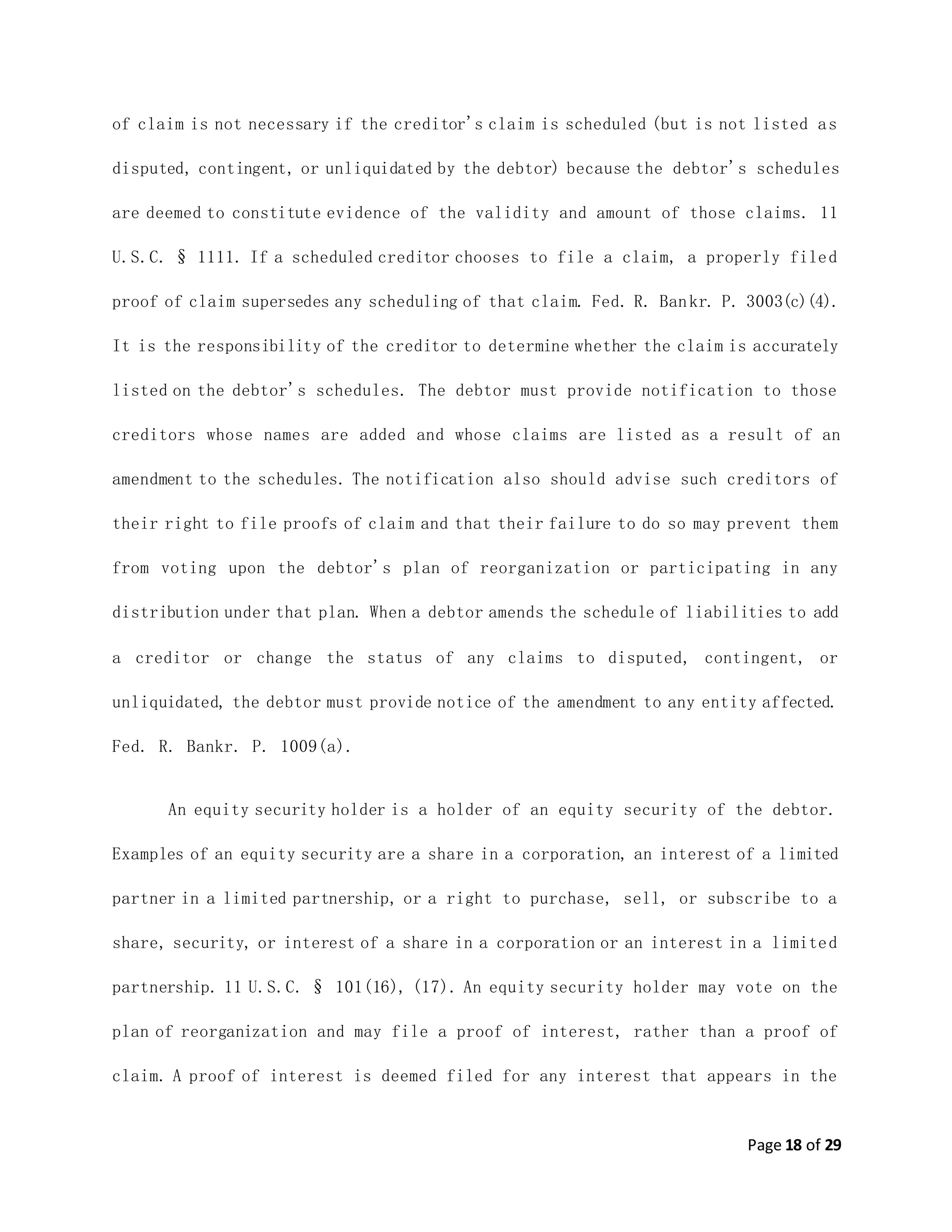
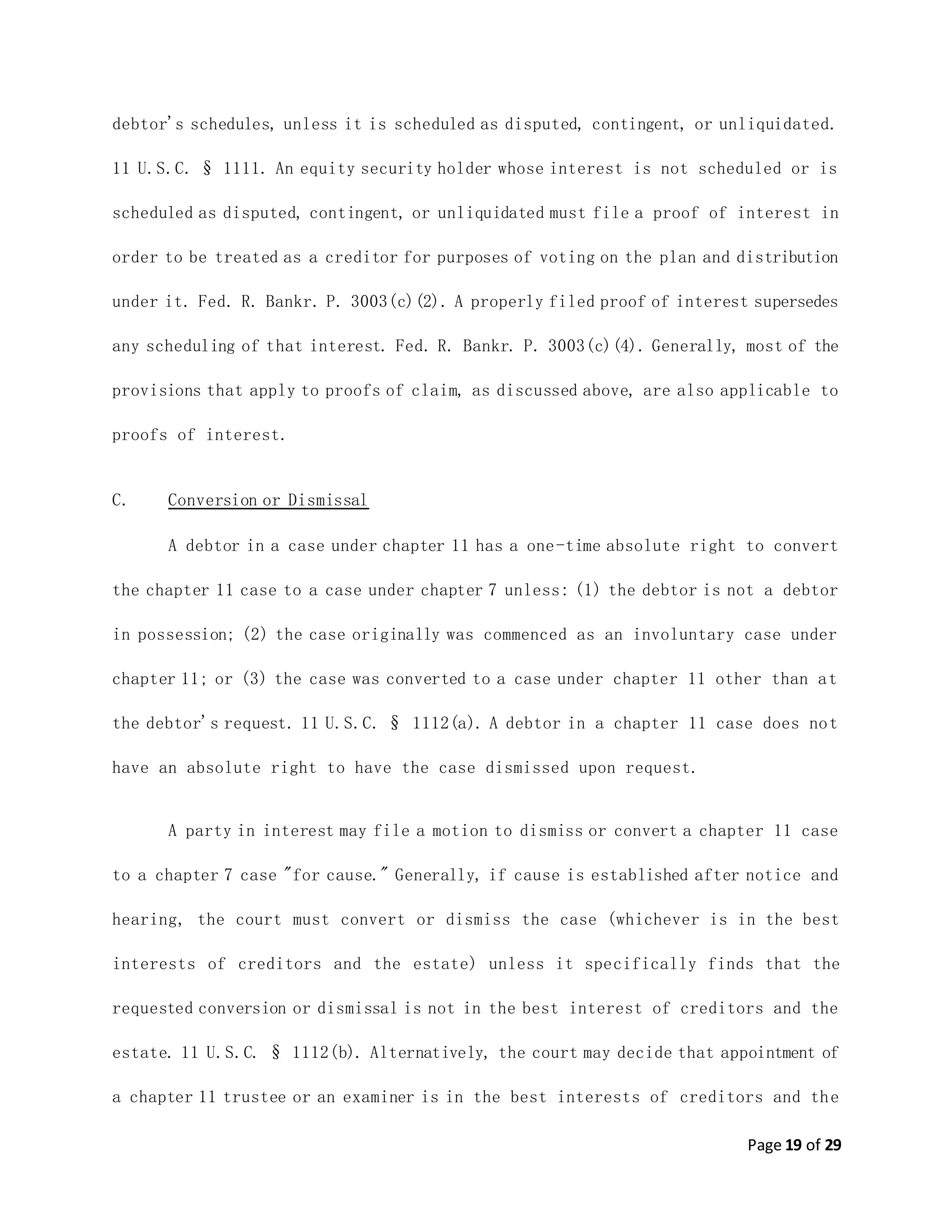

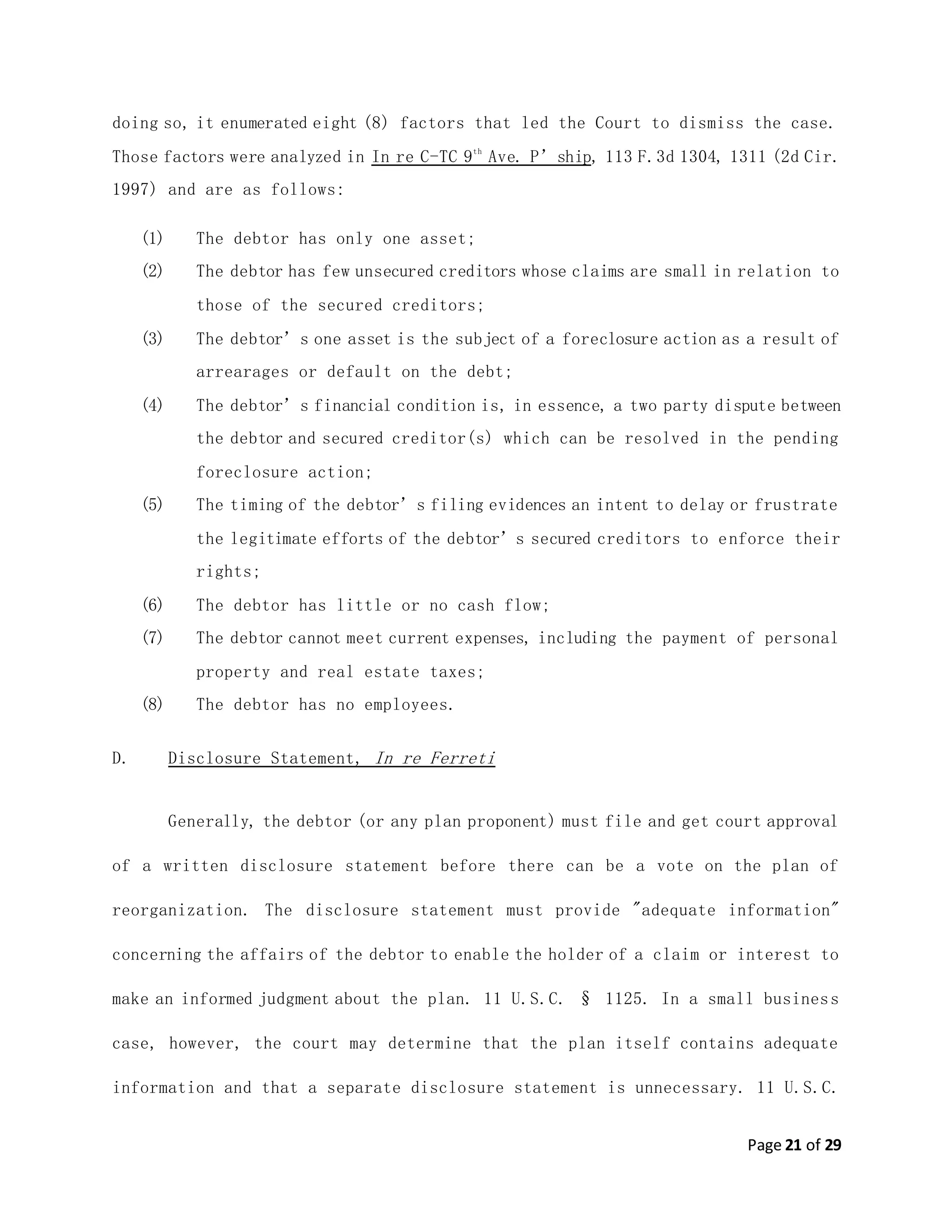
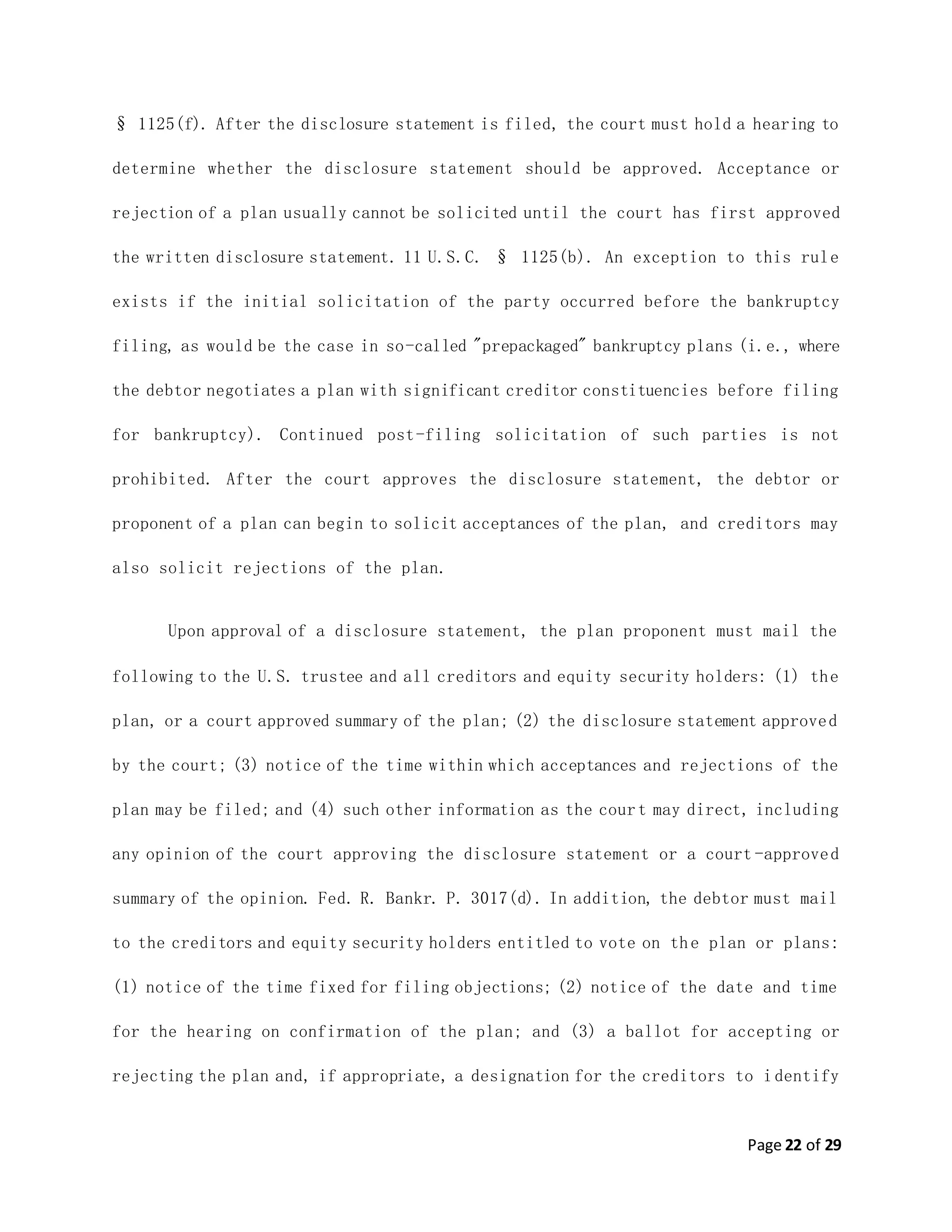
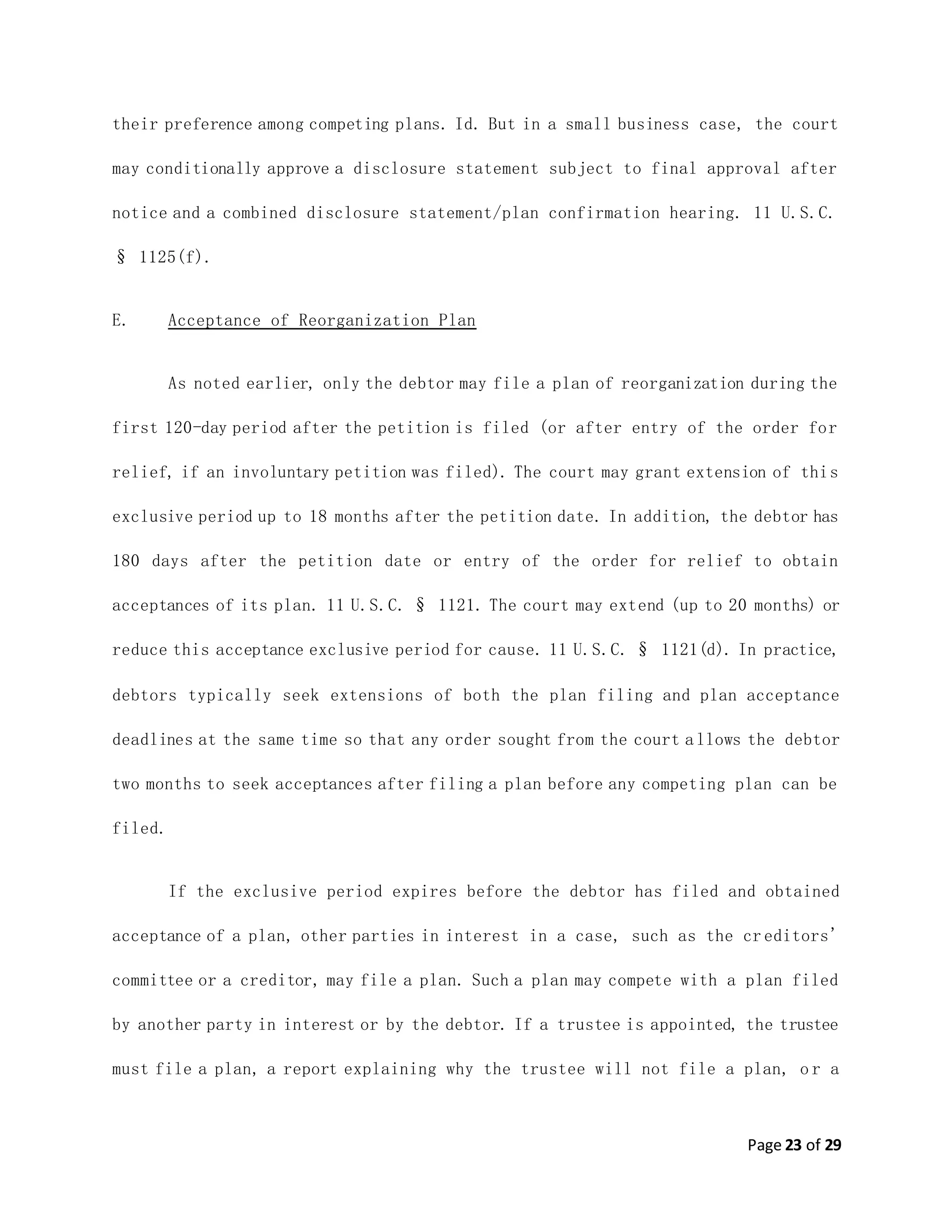
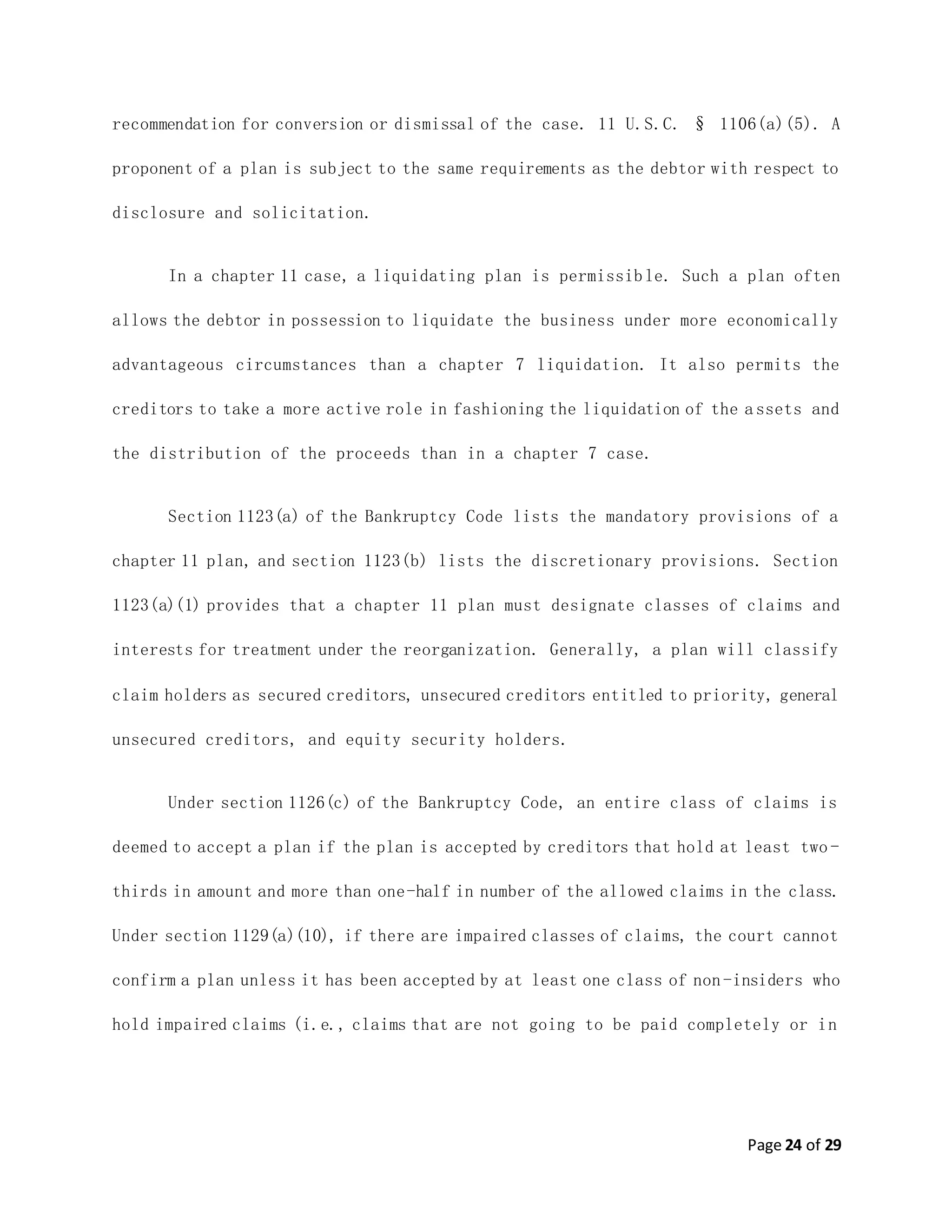
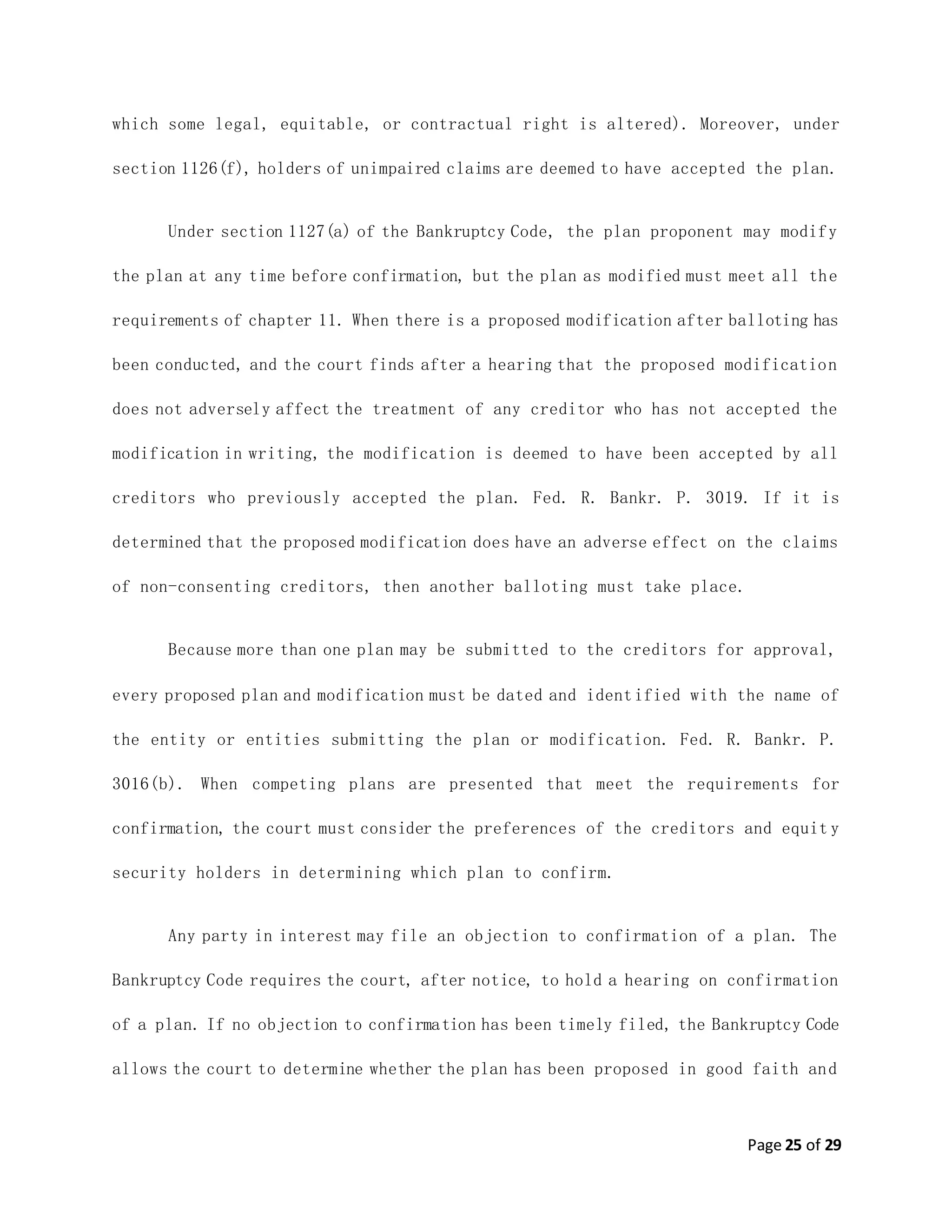

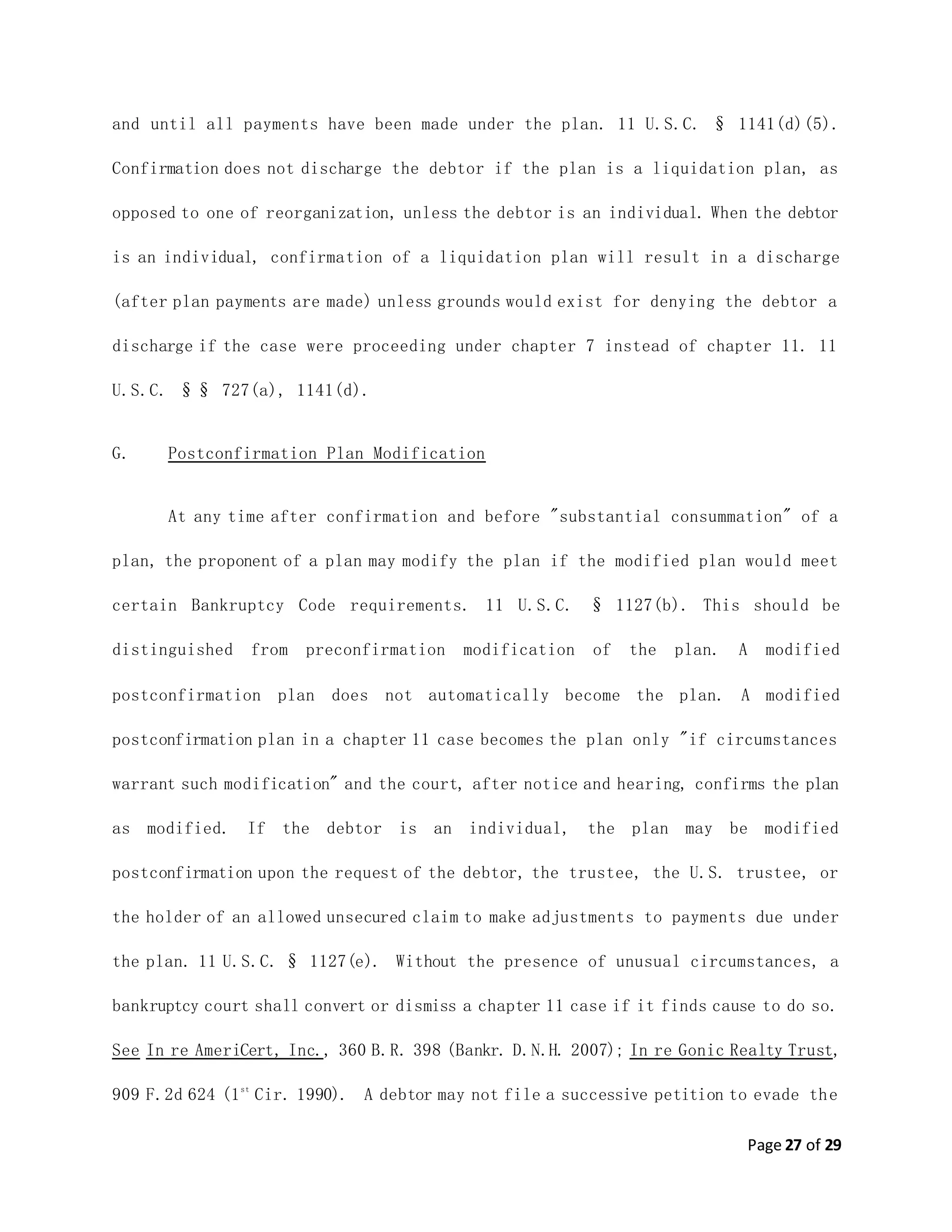
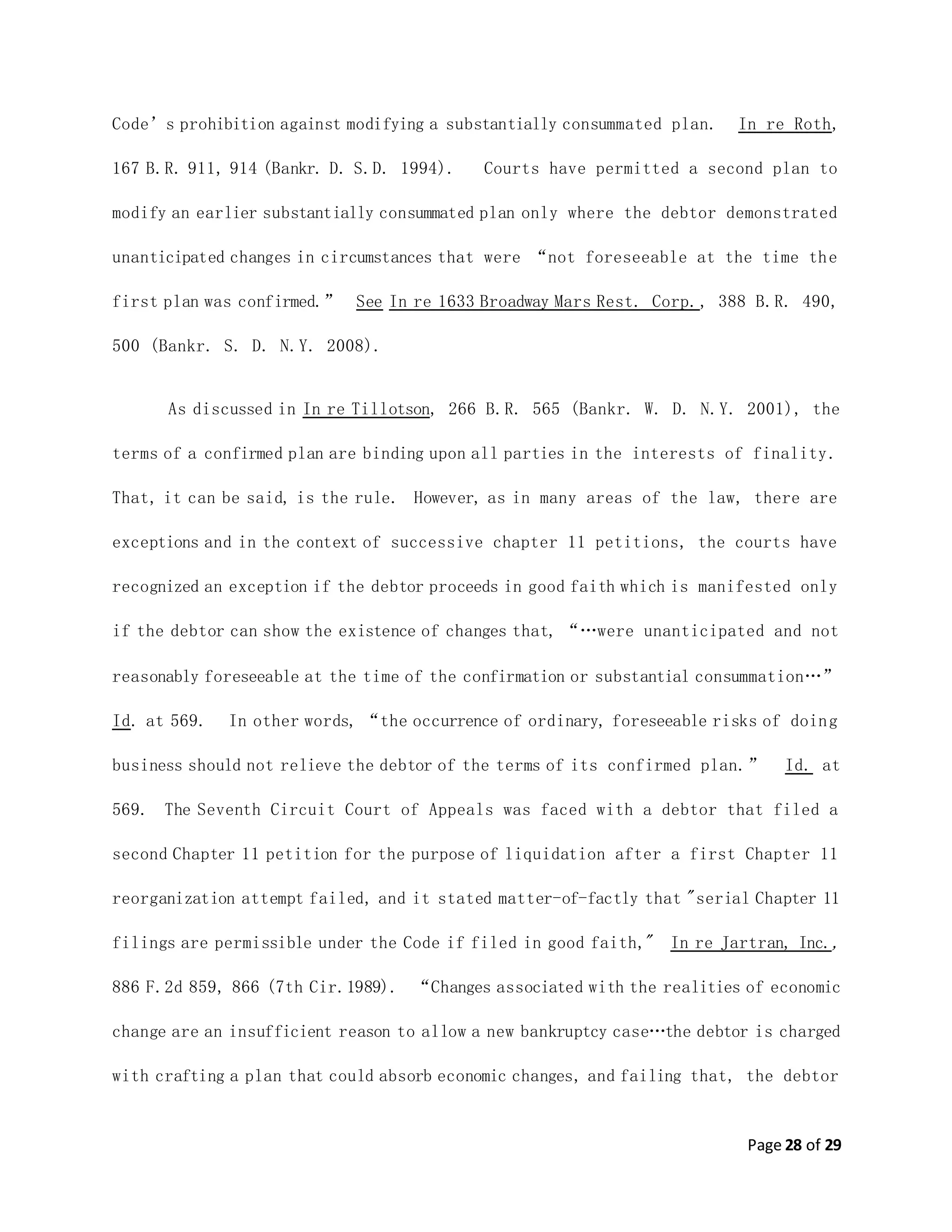
![Page 29 of 29
understood its risk in proceeding to confirmation under terms and assumptions that
could change. Even extraordinary and unforeseeable changes will not support a new
Chapter 11, if these changes do not substantially impair the debtor’s performance
under the confirmed plan.” In re Tillotson, 266 B.R. 565, 569-570 (Bankr. W. D. N.Y.
2001) quoting In re Adams, 218 B.R. 597, 600-602 (Bankr. D. Kan. 1998).
Notwithstanding the entry of the confirmation order, the court has the
authority to issue any other order necessary to administer the estate. Fed. R. Bankr.
P. 3020(d). This authority would include the postconfirmation determination of
objections to claims or adversary proceedings, which must be resolved before a plan
can be fully consummated. Sections 1106(a)(7) and 1107(a) of the Bankruptcy Code
require a debtor in possession or a trustee to report on the progress made in
implementing a plan after confirmation. A chapter 11 trustee or debtor in possession
has a number of responsibilities to perform after confirmation, including
consummating the plan, reporting on the status of consummation, and applying for a
final decree. Revocation of the confirmation order is an undoing or cancellation of
the confirmation of a plan. A request for revocation of confirmation, if made at all,
must be made by a party in interest within 180 days of confirmation. The court, after
notice and hearing, may revoke a confirmation order "if and only if the
[confirmation] order was procured by fraud." 11 U.S.C. § 1144. A final decree
closing the case must be entered after the estate has been "fully administered." Fed.
R. Bankr. P. 3022. Local bankruptcy court policies generally determine when the final
decree is entered and the case closed.](https://image.slidesharecdn.com/b5603def-a207-48a2-bdfe-7d5970ea5c4b-160315182612/75/NBI-2015-Chapter-11-29-2048.jpg)